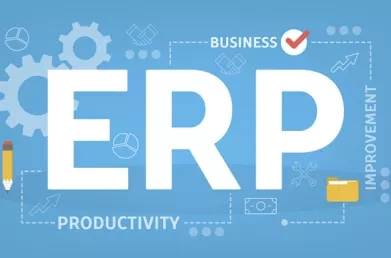Paperless ERP Validation
Last year with our help, one of our clients, a high-profile biotech business, chose SAP S/4 HANA as their new ERP solution. One of the implementation challenges for this project was the requirement for the new ERP solution to be validated.
Our client asked us to work alongside their internal quality team, providing validation advisory and project management services. One of our early recommendations was that they should adopt a fully paperless approach to validation by implementing a specialist electronic validation management solution. They accepted this advice and while it did take some effort to set up the new solution initially, the subsequent validation process has proven to be significantly better than traditional paper or hybrid approaches. Some of the main benefits that we have found include:
Much more efficient and effective document control and approval.
The document approval process is completely paperless. All validation-related documents are maintained in a single repository, with approvers receiving electronic notifications that their review is required. Approvals are captured in the validation solution using time-stamped electronic signatures, with any annotations or comments also being recorded. While in theory, similar processes can be set up using generic tools such as SharePoint, our experience in practice is that they are seldom configured or managed well enough to maintain effective document version control. There is also the fact that a SharePoint-based process itself needs to be configured and custom-validated for this purpose, whereas the e-validation solution is designed for this purpose, has vendor pre-validation and a structured approach to the remaining in-house validation prior to deployment for use.
Automatic generation of the requirements traceability matrix.
Traditionally, RTM generation required the maintenance of a large spreadsheet, which listed each functional requirement and needed to be updated as a separate task once each test script was defined or modified. It was typically a big challenge to ensure that the spreadsheet was updated properly each time and that there were no omissions. With the e-validation solution, links between test scripts and requirements are made in a single step as each script is being documented. Once this is done, there is no further work to do – the system can generate the RTM at any point and there is certainty that it is up to date.
More efficient capture and review of test results.
We found that the process of executing test scripts was greatly improved compared to traditional methods. First of all, the e-validation solution ensures that the correct version of test script is used and paper is never printed, so issues relating to incorrect versions of scripts are eliminated. The application provides a screen-based template for testers to confirm that each step in each script has passed, including a simple mechanism to upload evidence such as screenshots or report samples, with a time-stamped electronic signature being captured at each step. Where there are deviations, the system also manages these electronically by triggering a workflow process to review and assess the impact of each. The test review process is also much simpler than in traditional validation processes. There is a full electronic audit trail associated with each script and GDP errors are pretty much eliminated, as the e-validation application embeds attachments at the correct stage in each test script.

In summary, we have found the ERP validation process to be improved very significantly as a result of using the e-validation solution and by removing paper entirely. Of course, there are additional costs for the e-validation licences, and the set-up of the application takes time and needs to be well-managed. However, our belief is that the benefits in terms of faster execution and much less time-consuming review make the investment worthwhile in the long-run, particularly when the advantages of being audit-ready in future are factored in. I have deliberately not mentioned the e-validation solution we employed in this project, because this blog is not meant to be a sales testimonial for any particular application. There are a number of strong solutions in this space, each of which is likely to offer benefits such as those outlined above.
This blog was written by Sean Jackson, Principal Consultant at Lumenia. If you would like to learn more about this topic or how Lumenia can help you with any other aspects of ERP please send an e-mail to Sean Jackson.


